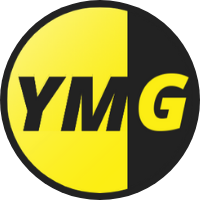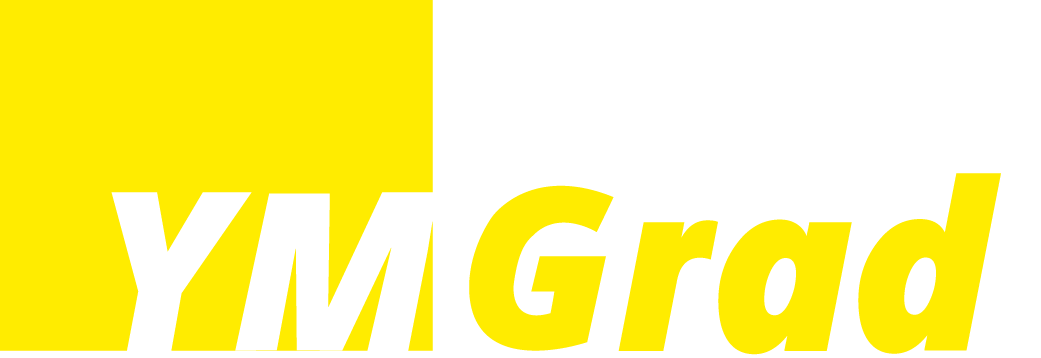Day 1 CPT Guide for International Students

.jpg)
Day 1 CPT (Curricular Practical Training) refers to a provision offered by certain U.S. universities that allows international students on F-1 visas to begin working in a practical training capacity from the very first day of their academic program. Typically, CPT is only available to students after they have completed at least one academic year of full-time study; however, Day 1 CPT is an exception designed for programs that require immediate hands-on experience as part of their curriculum. These programs are structured in such a way that employment or internships are considered integral to the coursework and educational objectives, allowing students to engage in paid or unpaid training off-campus right from the start. While this option is attractive to many students seeking real-world industry exposure alongside their studies, it is also controversial and can carry immigration risks if not handled carefully, especially if the program's structure appears to be more focused on employment than academics.
Pros of Day 1 CPT
- 1
Work legally on an F-1 Visa
Day 1 CPT technically allows students to maintain their F-1 visa status while working full-time, as long as the employment is directly related to their field of study and is an integral part of their academic program. This means students can legally work without changing their visa status, provided they remain enrolled and comply with all program requirements.
- 2
Immediate Start
Unlike traditional CPT, which requires students to complete one full academic year before becoming eligible, Day 1 CPT allows students to begin working from the very first day of their educational program. There is no need to wait an entire academic year; employment that is part of the curriculum can start immediately upon enrollment.
- 3
Bridge between Visa statuses
Day 1 CPT is often used by international students who have finished their Optional Practical Training (OPT) and are either waiting for their H-1B visa to be approved or were not selected in the H-1B lottery. It allows them to continue working legally in the U.S. by enrolling in a qualifying academic program that includes immediate practical training as part of the curriculum.
- 4
Maintains F-1 status
Day 1 CPT technically allows students to maintain their F-1 visa status while working full-time, as long as the employment is directly related to their field of study and is an integral part of their academic program. This means students can legally work without changing their visa status, provided they remain enrolled and comply with all program requirements.
- 5
Career Experience
Day 1 CPT allows you to continue gaining valuable U.S. work experience even after your OPT (Optional Practical Training) period ends. By enrolling in a qualifying academic program that includes immediate practical training, you can legally work in your field while pursuing further education, helping you stay competitive in the job market and maintain your F-1 status.
Cons of Day 1 CPT
- 1
Questionable Legality
Many universities that offer Day 1 CPT have been criticized for exploiting immigration loopholes by prioritizing work authorization over academic integrity. These programs may lack rigorous coursework or genuine educational value, which can draw scrutiny from the U.S. immigration authorities. As a result, students in such programs may face increased risks during visa renewals, future immigration applications, or if the institution is flagged or blacklisted by USCIS or ICE.
- 2
Risk at Visa stamping
Day 1 CPT is often considered a red flag by immigration officers during visa interviews and at the port of entry (POE) when reentering the United States. Because some programs are perceived as using Day 1 CPT primarily to provide work authorization rather than quality education, students may face intense questioning, additional scrutiny, or even denial of entry. There have been multiple cases where students were turned away at the border or had their visas revoked due to concerns about the legitimacy of their academic program.
- 3
Complicated Compliance
For a Day 1 CPT program to be compliant with immigration regulations, it must demonstrate that practical training is an integral part of the curriculum and required from the outset of the program. However, many institutions fail to genuinely meet this standard, offering minimal academic engagement while placing a heavy emphasis on employment. If a program cannot demonstrate that CPT is academically necessary and integrated into the coursework, it can potentially put students at risk of visa denial, termination, or future immigration complications.
- 4
No OPT if misused
If you use full-time CPT for 12 months or more, you become ineligible for Optional Practical Training (OPT) at the same degree level. This rule is strictly enforced by USCIS, meaning that extended use of full-time CPT, such as in some Day 1 CPT programs, can eliminate your opportunity to work under OPT after graduation. It is essential for students to closely monitor their CPT usage to prevent unintentionally losing their OPT eligibility.
- 5
Expensive Tuition
Day 1 CPT programs typically cost between $16,000 - $34,000 for a full master's degree, with annual tuition ranging from $8,000 - $17,000 per year. Additional expenses include CPT/admin fees ($200 - $600 per semester), travel for in-person classes, and books or insurance, totaling around $25,000 - $50,000 per year. Some universities offer scholarships or payment plans to help manage these expenses.
- 6
School Reputation
Many Day 1 CPT universities are low-ranked, lack proper accreditation, or are under heightened scrutiny by the Student and Exchange Visitor Program (SEVP), raising concerns about their academic credibility and compliance with immigration regulations.
- 7
USCIS scrutiny
Using Day 1 CPT has been linked to a rising number of Requests for Evidence (RFEs), visa denials, and increased scrutiny from USCIS. Immigration officers often question the legitimacy of such programs, which can jeopardize future visa approvals and status adjustments. Furthermore, having Day 1 CPT on your profile can impact future O-1 and EB-1 visa petitions.
- 8
No Real Education
In many Day 1 CPT programs, students attend classes infrequently or only to meet the minimum requirements, which can raise red flags. This lack of academic engagement often triggers USCIS audits and may lead to visa status revocation if the program is deemed non-compliant with F-1 regulations.
Legality of Day 1 CPT

Day 1 CPT is technically legal only if certain conditions are met:
- The CPT must be an integral and mandatory part of your degree program
- You must be enrolled as a full-time student and maintain good academic standing
- You must strictly follow all university policies and immigration regulations

While Day 1 CPT can be legal under specific conditions, its implementation by many universities often undermines the law's intent. Instead of offering genuine academic programs with integrated training, many institutions exploit this provision primarily to provide work authorization, with minimal academic rigor. This misuse not only violates the spirit of the regulations but also puts students at risk of immigration issues, including visa denials, status revocation, and future ineligibility for benefits like OPT or H-1B.

ICE and USCIS have increasingly cracked down on institutions abusing Day 1 CPT policies, with high-profile cases like the University of Farmington—an undercover operation set up by federal agents—highlighting the risks. These enforcement actions target schools that prioritize work authorization over legitimate education, leading to arrests, deportations, and blacklisting of institutions. Students associated with such programs may face serious immigration consequences, including visa revocation and future inadmissibility.
Confused about which alternative to take in place of CPT?
Book a counselling session with our experts to identify your plans, and get clear guidance on your study and work abroad plans.
Risks and Consequences
| RISK | EXPLANATION |
|---|---|
| Visa Denial | Consulates may deny F-1 visa renewals or H-1B visa applications if they detect suspicious use of Curricular Practical Training (CPT), especially from Day 1 CPT programs. If the employment appears to outweigh academic engagement or the institution is known for questionable practices, visa officers may view the student as having violated the terms of their F-1 status, which could lead to denials, delays, or increased scrutiny during future immigration processes. |
| RFE/NOID | USCIS may issue Requests for Evidence (RFEs) or even deny H-1B or green card petitions if your immigration history includes Day 1 CPT, especially from institutions with a questionable reputation. They may question whether you maintained valid F-1 status, and any perceived misuse of CPT can significantly impact future immigration benefits, including employment-based visas and permanent residency. |
| ICE Raids/Blacklists | Some Day 1 CPT schools have been raided by federal authorities, resulting in serious consequences for students, including arrest, visa cancellation, and deportation. Notable examples include Tri-Valley University (TVU) and the University of Farmington, both of which were shut down for visa fraud and non-compliance with regulations. Students enrolled in such institutions were found to violate their F-1 status and faced removal proceedings, highlighting the severe risks associated with enrolling in non-compliant programs. |
| Barred reentry | U.S. Customs and Border Protection (CBP) officers have the authority to cancel your visa and deny entry at the airport if they suspect misuse of Day 1 CPT or question the legitimacy of your academic program. In such cases, students can be immediately sent back to their home country, even if they previously held valid F-1 visas. This risk is particularly high for individuals attending schools with a reputation for weak academic standards or immigration compliance issues. |
| Loss of OPT eligibility | If you engage in full-time CPT (more than 20 hours per week) for 12 months or more, you become ineligible for Optional Practical Training (OPT) at the same degree level. This rule is strictly enforced by USCIS, and there are no exceptions; using full-time CPT for too long can permanently forfeit your right to OPT, which is often a key opportunity for post-graduation employment in the U.S. |
Common Day 1 CPT Universities

University of Cumberlands, Kentucky

Campbellsville University, Kentucky

Trine University, Indiana

Harrisburg University, Pennsylvania

International Technological University, California

Monroe College, New York
Important
These are heavily monitored by DHS and may appear on USCIS red flag lists.
Conclusion
Day 1 CPT is a legally risky workaround and not a reliable long-term immigration strategy. It should never be used casually or for convenience, as it carries serious consequences if misused. However, in certain situations, it may serve as a last-resort option—but only when pursued with proper legal guidance, enrollment in a compliant academic program, and a clear understanding of the risks to your visa status, future immigration prospects, and career.
The best alternative to the Day 1 CPT is the O-1 visa. Learn more about it here.
Stand out as extraordinary - we draft winning O-1 visa petitions.
With a proven success rate of 95%, get your petition approved with our expert help!
Frequently Asked Questions!

Tuition can range from $7,000–$14,000 per year, not including living expenses or legal fees if issues arise.

Some use it as a bridge between OPT and H-1B, especially to avoid employment gaps or visa expiration during processing delays.

A better, safer option is the O-1 visa, especially for individuals with extraordinary skills or achievements.

Only as a last resort—when you're already employed, H-1B sponsored, and fully compliant with immigration law—with legal counsel involved.

Day 1 CPT (Curricular Practical Training) allows international students on an F-1 visa to start working from the first day of their academic program, without waiting one academic year.

Technically, yes. If the CPT is integral to the degree and all USCIS guidelines are followed. However, most implementations violate the spirit of the law and invite legal scrutiny.

Some popular (and controversial) Day 1 CPT schools include the University of the Cumberlands, Campbellsville University, Trine University, and others. These are closely monitored by immigration authorities.

Yes. USCIS often issues RFEs (Requests for Evidence) or outright denials if Day 1 CPT appears questionable or improperly used.

If you use full-time CPT for more than 12 months, you lose eligibility for Optional Practical Training (OPT).

Absolutely. It’s a red flag at visa interviews and at ports of entry. Many students have been denied reentry or had their visas canceled.




